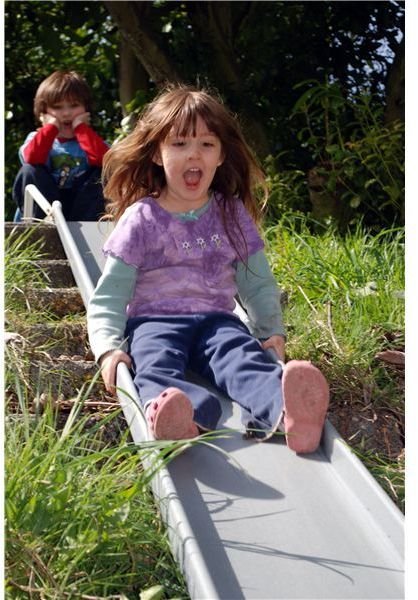Four Teaching Methods to Encourage Social Interaction in Children With Autism
Autism is a brain-based disorder that impairs an individual’s communication, behavior, and ability to interact socially with others. It
belongs to a broader group of five brain-based disorders called Autism Spectrum Disorders (ASD).
There is no known cure for autism or any other ASD, but that does not mean that these individuals cannot learn and improve their skills base. Certain symptoms, like poor social skills, can be improved with treatment and behavioral change. Just like any other child, an autistic child is a special, unique individual with his or her own strengths and needs.
Try this simple method if you want to learn how to teach autistic children social skills. However, remember that the tips and techniques offered here may work for one child but not for another.
Basic Social Skills to Teach
Making and accepting compliments, taking turns and sharing, and initiating, responding and maintaining conversations are fundamental skills for any child. While most kids learn these skills by observing others’ social interactions, the autistic child must be taught them. Although many individuals make the mistaken assumption that autistic children are unable to learn, the truth is, these children simply need help understanding things and ideas that they perceive as difficult.
Sample Teaching Method: Making a New Friend

Try this simple method with your child to help him or her learn the necessary skills to make a new friend. Please keep in mind that each child is different so while this method may work well with one child it could fail with another.
- Smile and walk up to your child.
- Say your name and maintain good eye contact. Say something like “Hi, my name is Donna."
- Ask your child what his name is and respond with a comment like “It’s nice to meet you.”
- Use a pre-planned conversation starter such as “What are you playing with?” or “What are you doing?”
- Respond to whatever response your child makes.
- Invite your child to play with you. Say something like “I’m going to play with my cars now. Would you like to play with me?"
Praise your child for his or her efforts, and encourage your child to maintain good eye contact with you during this exercise. Talk about ways to start a conversation with others such as asking them what they are doing or talking about an interest they might have like sports or a hobby. If your child learns best by using images and words, consider making a chart or poster of the written conversational starter with a matching image.
Repeat this exercise until your child is comfortable, and use frequent readings of a book like How to Be a Friend by Marc Brown to reinforce the lesson. Discuss what the characters are doing and how they might be feeling. Ask your child to talk about what he or she might do in a similar situation.
If your child is a visual learner, it could be helpful to ask two friends or relatives to model the role-play situation while your child watches for a few times before having him or her actually participate.
Why Teach Social Skills to Autistic Kids
Exact symptoms exhibited by an autistic child vary from child to child, but there are some behaviors that are characteristic such as echolalia (mimicking or repeating other’s words without understanding their meanings), inability to initiate or respond to conversation or social interactions, and inability to play cooperatively or make friends. Because of their delayed and/or impaired development in these vital life skills areas, autistic kids need and benefit from social skills instruction.
A research study done cooperatively by individuals from the University of Kansas and the Shawnee Mission Public Schools revealed that it is better to focus on teaching these children concrete rather than abstract skills. The value of teaching a few basic skills versus a wider range of social skills was also validated.
A note about echolalia: A suggested method of testing for understanding and comprehension in verbal communication is to ask the other person to repeat what they heard. However, for children with echolalia, using this method can lead to false assumptions about their actual comprehension of a lesson because they are simply repeating the words. They may or may not actually understand what was said.
Teaching Methodologies
Autistic children seem to learn best when a variety of teaching methods are used. Here are some suggested methods that may be useful as you work with your child:
Role-playing gives them the opportunity to practice new skills in a safe environment. Parents or caregivers model the correct behavior such as smiling or extending one’s hand to another and children mimic them. Once the child is comfortable with interacting in this manner, he or she can begin to practice with other individuals and finally with peers. (Note: physical contact can be uncomfortable for many autistic children. Introduce ideas like shaking hands carefully based on your own child’s preferences.)
Video modeling benefits those who communicate better through pictures than words as they can see other individuals modeling the appropriate behaviors. Illustrated posters and charts can combine words and images to increase memory skills as well as serve as a way of prompting the child’s memory. Some good images to use are those of children playing together or holding a conversation.
Structured discussions with carefully prepared questions that guide the child through the steps of holding a conversation are useful as well.
Reading stories on topics like friendships, manners and relationships are good ways to reinforce the other teaching methods. As a plus, because reading a book and looking at the pictures is fun, the kids do not realize that they are actually learning valuable lessons. Specially designed stories for children with learning disabilities, also called social stories, can be extremely helpful as well. These stories are simply illustrated and direct, which makes them easy to understand.
Recommended Reading
Reading books together helps autistic children overcome their natural inclination to be unaffectionate as the illustrations and the words offer a distraction. Hearing the words helps them make the connection between the written word and the spoken word. Reading increases their literacy and memory skills. Finally, it is just plain fun and a good way to spend some valuable time with your precious child. Here are some suggestions to get you started:
- How to Be a Friend, Marc Brown, Little, Brown Books for Young Readers (2001), for ages four to eight
- Feelings, Aliki, Greenwillow Books (1986), recommended for ages four to eight
- When I Feel Angry, Cornelia Maude Spelman, Albert Whitman & Company (2000), suggested for babies through preschoolers
- The Berenstain Bears and the Trouble With Friends, Stan and Jan Berenstain, Random House Books for Young Readers, (1987), recommended for ages four to eight
- Hands Are Not For Hitting, Martine Agassi, Ph.D, Free Spirit Publishing (2009), suggested for ages four to eight
- Share and Take Turns, Cheri J. Meiners M. Ed., Free Spirit Publishing (2003), best for ages four to eight
It is important not to limit your child’s potential or let a diagnosis determine his or her life’s course. While they may require some special services or individual treatment to progress, they can be as successful as any other individual when you help them maximize their strengths. Hopefully, the information presented here on how to teach autistic children social skills will give you some additional teaching tools as you work with your child.
References
Kamps, Debra M., Leonard, Betsy R., Vernon, Sue, Dugan, Erin P., and Delquardri, Joseph D. (University of Kansas) and Gershon, Beth, Wade, Linda and Folk, Louise (Shawnee Mission Public Schools), “Teaching Social Skills to Students With Autism to Increase Peer Interactions in an Integrated First-Grade Classroom,” Journal of Applied Behavior Analysis, Summer of 1992.
DeGeorge, Katherine L., “Using Children’s Literature to Teach Social Skills,” LD Online.
Understanding Autism Spectrum Disorders (ASDs), American Academy of Pediatrics (2006)
Author’s own experience raising a child with autism, Asperger’s Syndrome and ADHD
Image Credit
Image: BeeSlide by kakisky used under morgueFile Free License
Disclaimer
The information provided here is not intended to diagnosis or treat. It is based on the author’s own research and experience with an autistic child whose diagnosis is “high-functioning autism.” These methods may or may not be appropriate for children with another diagnosis or even other children who are considered high-functioning as there may be other developmental issues that could impact their learning abilities. This is just the method that we find works best in our particular situation. If you have ideas or tips for other techniques, we would love to hear about them - just respond in the comments section below.
